Magazine
Celebrating Jugaad

The Commonwealth Games were a triumph of Indian Jugaad
|
Long before Suresh Kalmadi became a politician and chairman of the organizing committee of the 2010 Commonwealth Games (CWG) in New Delhi, he was an Air Force pilot. Among his fondest memories, he says, was landing planes in Leh, which lacked proper runways. Over the years, he seems to have perfected the art of skating on the edge. It has made him particularly adept at what is popularly known in India as jugaad, which, loosely translated, means improvising band-aid solutions with a native inventiveness that is born out of a culture of scarcity and survival. India may be staking a claim as a global economic superpower, but jugaad remains an Indian obsession. And it was on glaring public display at the Commonwealth Games in the nation’s capital in October.
In the weeks leading up to the games, the Indian and Commonwealth media were buzzing with headlines about the corruption, construction delays, sub-standard work and public apathy surrounding the games. Many countries considered withdrawing and several prominent athletes pulled out of the games after a foot bridge collapsed and unsanitary conditions were exposed in the athletic village. The Indian organizers were dismissive of the criticism, with organizing committee secretary-general Lalit Bhanot, protesting, “Their (Western) standard of hygiene and cleanliness could be different from ours, so there is nothing to be ashamed about it.” Indian author Chetan Bhagat stopped just short of advocating a boycott of the games, which he dubbed a “loot fest.” When the games finally got underway, the mocking headline in the London Economist breathed a sigh of relief, “At least they started.” By the end of the fortnight, however, the Games, which many Commonwealth officials thought
were on the verge of collapse and possibly even cancellation, were being heralded as “the great Indian games.” The Games, featuring 6,000 athletes from 71 countries, concluded without any major mishap and India bagged an unprecedented second place in the medals tally. The event was not entirely flawless. For instance, a scoreboard at the vacant rugby stadium pried loose and crashed to the ground. Scales at the boxing venue malfunctioned disrupting the event. The ticketing authority manager was fired midway through the competition after it was reported that fewer than 200,000 of the 1.7 million tickets had been pres-sold, as a result of which many events were held in near empty stadiums. Nevertheless, a spectacular opening pageant and an equally stunning, colorful closing extravaganza book-ended the chaotic and problem-plagued games that only days earlier had teetered on the verge of collapse. India’s jugaad talents had saved the day once again. But a national soul searching is now underway in India over the opportunities and billions of dollars squandered. Kalmadi, who came to symbolize the public face of ineptness and disorganization, was roundly jeered during his speeches at the opening and closing ceremonies. Azim Premji, chairman of Wipro, protested in a newspaper column: “The last-minute rush jobs, or jugaad as we proudly call it, are not the stuff of aspiring world’s powers.”
More significantly, Prime Minister Manmohan Singh has ordered a special inquiry, led by VK Shunglu, the former comptroller and auditor general of India, to investigate the allegations of corruption and mismanagement of the games. Other investigations are underway by the Central Bureau of Investigations, the Enforcement Directorate and the anti-corruption agency, the Central Vigilance Commission (CVC). According to Indian media reports, a preliminary assessment of the CVC has found that as much as Rs 5,000 crores of the Rs 14,000 crores spent on the games may have been misappropriated. The Times of India reported that the CVC estimates that Rs 200 crores of the Rs 665 crores (nearly 30 percent) spent by the Organizing Committee on “overlay projects” — temporary structures, such as tents, cables, signage, etc.— may have been siphoned off. It reported that games officials had paid Rs 3,751 for Rs 22 tissue rolls and the price tag of table patio and umbrellas was hiked from Rs 5,203 to Rs 62,595. Given the scale of the mismanagement and corruption already exposed, the BJP, India’s main opposition party, is demanding a joint parliamentary investigation. Esprit de Jugaad The Commonwealth Games, which were supposed to be Shining India’s global coming out party and a test run to bid for the Olympics, instead have come to epitomize the Indian jugaad mentality — pulling off something at the last minute, often by cutting corners or compromising on quality. India runs on jugaad. The lack of perfection and ad hoc fixes to pull off a task are even glorified. The media criticism and speculation over the viability of the games days before the opening ceremony, grossly underestimated the power of jugaad. The Indian organizers were miffed when foreign athletes and the CWG top brass criticized their last minute cut-and-paste efforts. They seemed genuinely bewildered at the international anxiety over the lax state of preparations even two weeks before the event, because they were experts in last minute fixes and they exhibited their jugaad talents spectacularly at the games. The performance was so well staged that even their most virulent critics were wowed. Cosmetically, the work appeared near perfect. Only if you scratched the surface would you have noticed the imperfections. If you were expected to find concrete behind the vinyl trappings draped over the walls, surely, that’s your fault.
With ill-prepared infrastructure and a government hell-bent on making the event look good, several draconian measures were imposed on denizens of the city. The already congested traffic in the capital had to make way for CWG participants and officials. One dedicated lane for CWG traffic meant parting with a third to a half of the road at several stretches. If even a stray tyre intruded the Games track, Delhites risked a $45 penalty. As a result, visiting athletes were not inconvenienced and most residents of Delhi stayed home rather than protest the failure to complete the planned infrastructure. Beggars were forcibly driven out of the city ahead of the games. Indu Prakash Singh of the Indo-Global Social Service Society, said: “We have confirmed reports that many of the poor were taken to railway stations, boarded on trains and sent to neighbouring cities. They were also told not to return to the city till the Games are over.” Sanjay Kumar of Ashraya Adhikar Abhiyan, a nonprofit that advocates for Delhi’s poor, complained that “many beggars were loaded into trucks and sent out side the city with a warning not to to return before the completion of the Games.” On the opening and closing days of the games, when the extravagant shows were on display, the city was under virtual curfew. Not a single restaurant, shop or market was open. Other than the few thousands heading to witness the grand shows at the Jawaharlal Nehru (JLN) Stadium, millions of Delhites were confined to their homes, so that the ceremonies were unimpeded. Earlier, flouting several norms, the capital was brought to a virtual standstill so construction and renovation work could be completed for the opening ceremony. Heavy rainfalls compounded the problem for residents as construction work overwhelmed the city’s sewage and drainage system resulting in severe water logging of the roads. As the host city, Delhi reaped scores of new infrastructural facilities. The 12-day event is leaving behind 26 new flyovers as well as 24 new road over- and under-bridges to alleviate the capital’s traffic problem. But experts are dubious of the quality of the work. Town planner and senior architect Anil Laul says: “I have
never seen concrete drying and hardening so early. It’s no new technology, just a faith that it wouldn’t fall. Concrete is unaware of your faith, it follows its own course. With all bridges left open to masses so early after construction and skipping the required processes, Delhi is driving on a ticking bomb.” Incredibly, many flyovers were left open for use even as the top bituminous layer was laid over the road. North Delhi’s Salimgarh bypass and the Barapulla elevated road projects are two examples. While the Salimgarh bypass was opened for public use just a month prior to the games, the Barapulla elevated road remained incomplete. The Barapullah Road and the Ring Road bypass (together costing nearly $225 million) were the main transit routes for athletes to commute to the venues from the games village. The bypass was opened for a trial run in August and began crumbling within a few days. Only the first two of five layers on the road had been laid, but the additional layering had to be scrapped, because of time pressures. The Barapulla elevated road was left incomplete because debris clogged the drains underneath. Safety experts say that using roads and flyovers before the top bituminous layer is laid and hardens is both risky and harmful to the integrity of the structure.
The Chief Vigilance Commission has identified major financial irregularities and poor quality of construction work in most CWG projects after probing 16 of them. It has singled out the use of sub-standard material, rigging of bids, sanctioning of frivolous projects, favoritism in the selection of contractors and tampering post-auction figures by private bidders, among the many problems. Fake certificates were routinely issued to approve substandard work and material. The renovation work at the various stadia turned out to be more expensive than constructing new ones. The Organizing Committee spent Rs 961 crores ($220 million) to renovate the main Jawaharlal Nehru Stadium and Rs 262 crores ($60 million) to spruce up the Dhyan Chand Hockey Stadium. By contrast, the new, state-of-the-art Nagpur Cricket Stadium in central India cost just Rs 64 crores ($15 million). Attendees at the opening and closing ceremonies of the games at JLN Stadium were greeted by the foot-over-bridge (FOB), which was rebuilt by the army in just six days. Thousands
took a leap of faith on the structure, at the end of Barapullah Road, which had collapsed just 10 days earlier. The Indian army too displayed its jugaad efficiency at its best. Earlier, after the bridge collapsed, New Delhi Chief Minister Sheila Dikshit rebuked critics: “It’s being overplayed by the media. It was just a small mishap.” Safety standards were also thrown to the winds in the mad scramble to launch extended Metro services at the onset of the Games. The initial plans for the Metro called for it to run primarily underground. But in the race to meet the Games’ deadline, the plan was altered and at many places the elevated metro tracks have killed once thriving markets. Bearing an even more punishing brunt are people whose homes have been turned into suffocating, ventilation choked cubicles as the elevated Metro trains breeze past their homes. Bibek Debroy, professor at the Delhi-based Centre for Policy Research (CPR), said, “Delhi has got the kind of transport infrastructure it needed but not necessarily the integrated planning that it needed.”
Pocket the Green Countless old trees were razed and green land paved to widen roads or build standstone walkways in the name of beautification of the city for the CWG. The Organizing Committee had boasted the games would be the world’s first carbon consumption neutral event. To reduce the event’s carbon footprints, two million tree saplings and five million potted plants had to be installed across the city. The roads leading to the game venues and village were lined with green plants all right. But not as a result of environmental planning, just jugaad. Most of them were grown in nurseries, then planted overnight into the ground with the pot until the event was over, ready for re-installation elsewhere. Soon after the closing ceremony, the plants were vandalized. One lawyer was charged with taking several pots of plants and flowers from the JLN stadium itself.
A state-of-the-art Games Village, comprising 1,168 air-conditioned apartments, was developed along the east bank of the River Yamuna by the Delhi Development Authority (DDA) at a cost of more than $230 million. The conditions at the Games Village came under sharp attack before the games. A participating country’s chef-de mission complained after checking into the village: “There are cracks in the buildings, shattered glasses in residential area. Difficult to believe it’s been certified as fit.” The U.K. delegation filed official complaints of leaking water in its units, protesting that “25% of our accommodation is unusable.” Within days of the closing ceremony, the government announced the confiscation of the private builder Emaar-MGF’s Rs 183 crore ($41 million) bank guarantee for shortcomings, deficiencies and delays in the construction. No Gain Games
A survey of the Confederation of All-India Traders (CAIT) found that the major markets in the capital experienced a 40 percent decline in business as a result of hyped-up security at the Commonwealth Games. Even as the country was hosting the biggest international event ever, which was expected to give a boost to tourism in the city, hotel industry insiders couldn’t wait for the 12 disastrous days to come to an end. “We as an industry are frankly disappointed,” said Saeed Shervani, president of the Hotel and Restaurant Association of Northern India (HRANI), which counts 1,500 hotels among its members. According to Shaervani, occupancy dipped to 20 percent in 1, 2 and 3 star hotels, while the larger hotels reported 50 percent occupancy. “It was five days of no work for many restaurants in the capital,” he said, complaining that heavy security restrictions and forced closure of shops in prime areas where restaurants were located had decimated the hospitality sector during the games. Negative media coverage of the preparation for the games, transportation problems in the city, dengue fever and malaria, had all combined to discourage tourists from the capital.
The lack of planning and the last minute rush to complete infrastructure projects for the fortnight-long games did not allow for any consideration of how these expensive assets would be utilized afterward nor for leveraging the games for future development. While Commonwealth Games Chief Executive Mike Hooper and Organizing Committee Chairman Kalmadi were publicly slugging it out over the poor preparation of the 2010 CWG, Glasgow, which is hosting the 2014 games, unraveled its legacy plan, nearly five years ahead of the actual games. The Scottish government said, “This plan sets out our aspirations before, during and after the Games to 2019. An Active Scotland, A Connected Scotland, A Sustainable Scotland and A Flourishing Scotland represent our ambitions for a lasting and positive legacy.” The 2002 Manchester CWG resulted in the creation of 6,300 permanent jobs of which 2,900 were in the Manchester area alone. Other benefits included the development of significant business opportunities in East Manchester, including a regional retail center, a four-star hotel, offices and new housing developments supporting up to 3,800 jobs. Likewise, the 1992 Barcelona Olympic Games Village helped solve the city’s housing problem.
Delhi never had such aspirations and was on the verge of losing its bid to Hamilton, the Canadian city that had hosted the first CWG in 1930. Hamilton had put McMaster University at the center of its Games concept. “The idea was to create a permanent legacy of world-class and accessible sporting infrastructure for students in this city of 500,000,” says Boria Majumdar a Rhodes scholar and research fellow at La Trobe University in Melbourne. Delhi also developed a legacy plan, but couldn’t stick to it. It promised to turn the Games Village into hostel accommodation for Delhi University students at the end of the event. But the idea was quietly shelved after the Indian bid succeeded and apartments are now being sold in the open market. Indian Parliamentary records show that the games budget balooned from Rs. 617.5 crores ($140 million) in 2002 to Rs. 70,608 crores ($16 billion) — over 100 times! By contrast the 2006 Melbourne Games cost just $1.3 billion. Glasgow’s planned investment for the 2014 games is projected at $700 million. Majumdar fears that the sports infrastructure developed in New Delhi will rot because of the lack of sporting culture in the country: “Melbourne spent $1.4 billion in 2006. Delhi wasted $6 billion in 2010.” Nalin Mehta, joint editor of the international scholarly journal, South Asian History and Culture, says, “Ultimately the structures will fall to ruins after the extravaganza of CWG is over, once-in-a-while political rally, film star night or reality show audition will take place. The flats built for the athletes will be occupied by rich. The facilities as usual will not reach the deserving who have won medals despite all the drawbacks.” More than the international shame that was heaped on the country, that is the real tragedy of ornamental jugaad that salvaged the 2010 CWG.
|

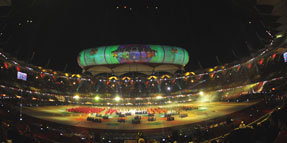



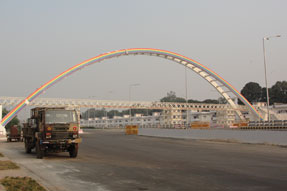

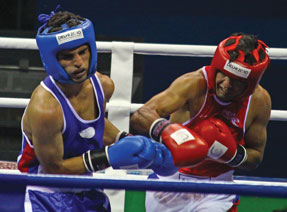

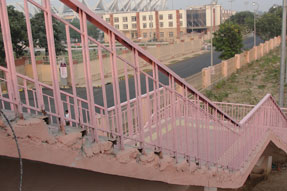
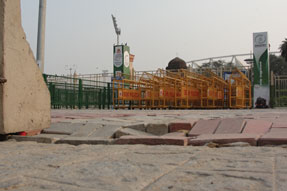


You must be logged in to post a comment Login